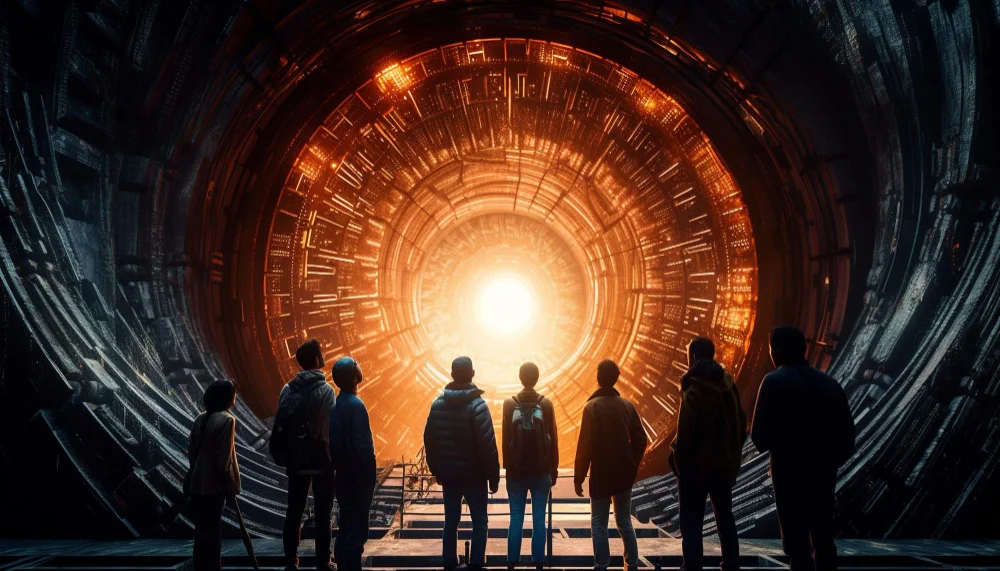Introduction: What Is the Vision Science Society?
The Vision Science Society is a global community of researchers dedicated to understanding how humans and other species see the world. It brings together scientists, students, and professionals who study vision through psychology, neuroscience, computation, and biology.
Founded in 2001, the society provides a platform for collaboration, innovation, and sharing new discoveries in visual perception and brain science. Each year, thousands of researchers attend its events to exchange ideas and explore how vision connects to cognition, behavior, and technology. The vision science society has become one of the most influential organizations in advancing the science of sight.
The Core Mission and Goals of the Society
The mission of the Vision Science Society is simple but powerful — to promote progress in the scientific understanding of vision and its relationship to the brain and behavior.
It aims to:
- Encourage interdisciplinary research on vision and perception.
- Provide opportunities for scientists to share their findings and collaborate.
- Support diversity, inclusion, and equal participation in science.
- Inspire the next generation of vision researchers.
Through these goals, the vision science society helps scientists connect fundamental discoveries about how we see with real-world applications in health, technology, and education.
The Vision Science Society Annual Meeting
Every year, the Vision Science Society hosts its biggest event — the VSS Annual Meeting. This is the heart of the society’s activity and one of the most anticipated events in the field of vision research.
The meeting gathers over 1,700 participants from around the world. Researchers present their latest findings through oral talks, posters, symposia, and workshops. The event covers everything from visual attention and motion perception to brain imaging and computational models of vision.
It’s not just a conference — it’s a community celebration of curiosity and collaboration. The annual meeting allows young scientists to meet leaders in the field, build connections, and find mentors. It also provides opportunities to explore new research tools, technologies, and approaches shaping the future of visual science.
Key Highlights of the Annual Meeting
- Poster Sessions: Hundreds of posters present detailed studies in perception, neuroscience, and modeling.
- Symposia: Expert panels discuss hot topics like artificial vision, visual illusions, or cognitive processing.
- Workshops: Hands-on sessions train students in experimental methods and data analysis.
- Social Events: Informal gatherings, mixers, and the “Meet the Professors” session promote mentorship.
The energy at the annual meeting reflects the passion of the entire vision science society community — people united by the goal of understanding how vision works.
Membership at the Vision Science Society
Membership in the Vision Science Society is open to anyone interested in the scientific study of vision. Members include professors, postdoctoral researchers, graduate students, and industry professionals from around the world.
Joining the society offers many benefits:
- Reduced registration fees for the annual meeting.
- Eligibility to present papers, posters, or symposia.
- Access to archived meeting abstracts and research resources.
- Participation in elections and society decisions.
- Networking opportunities across global research groups.
Becoming a member means joining an international network of innovators shaping the future of visual science.
Student Opportunities and Travel Awards
The vision science society strongly supports early-career scientists. Each year, it offers travel awards, mentoring sessions, and student events designed to make participation more accessible.
Programs like “Meet the Professors” give students the chance to engage directly with top researchers, ask questions, and discuss career paths. Travel awards help cover expenses for students presenting their work at the annual meeting. These efforts make VSS a nurturing environment for young scientists.
Research Areas and Topics Represented at VSS
The research shared at Vision Science Society meetings covers a wide range of disciplines and methods. Vision science is a vast field, and VSS embraces every aspect of it, including:
- Visual Perception: How we recognize color, shape, depth, and motion.
- Attention and Eye Movements: How we focus on specific objects in complex scenes.
- Neuroscience of Vision: How the brain processes visual signals from the eyes.
- Computational Vision: How machines and algorithms can mimic human vision.
- Cognitive Psychology: How perception interacts with memory, learning, and decision-making.
- Clinical Vision Research: Understanding and improving visual disorders or blindness.
By bringing together experts from these areas, the vision science society encourages collaboration and sparks new insights about how we see the world.
Abstract Submissions and Presentations
Each year, VSS invites scientists to submit abstracts of their research for presentation at the annual meeting. Submissions are peer-reviewed by committees that evaluate clarity, originality, and scientific quality.
Accepted works are presented as either oral talks or posters. Talks provide a stage for in-depth discussion, while poster sessions allow more interactive, one-on-one exchanges.
The submission process is simple:
- Prepare a concise abstract summarizing your study.
- Submit it through the official VSS website during the open call period.
- Wait for review and acceptance notice.
- Present your findings at the annual meeting.
This transparent and merit-based approach ensures that VSS showcases the best and most innovative research in vision science.
Sponsorship, Exhibitors, and Industry Partnerships
The vision science society also works with industry partners, sponsors, and exhibitors who contribute to advancing research tools and technologies. Companies specializing in eye-tracking, brain imaging, and computational modeling often sponsor events or display new instruments at the meeting.
These partnerships are mutually beneficial:
- Scientists gain access to the latest research technologies.
- Companies receive feedback from experts and exposure to thousands of researchers.
- Students discover industry opportunities and career paths in applied vision research.
Sponsorship funds often support travel awards, student programs, and society initiatives — reinforcing VSS’s commitment to education and inclusivity.
Impact of the Vision Science Society on Global Research
The impact of the Vision Science Society extends far beyond its meetings. Over the years, it has become a major force in shaping vision research worldwide.
Through its events and collaborations, VSS connects thousands of researchers across disciplines. Many of its members also contribute to leading journals such as the Journal of Vision and Perception, expanding the reach of new discoveries.
The society’s focus on diversity and inclusion ensures that ideas come from many perspectives and backgrounds. This global cooperation has led to breakthroughs in understanding how humans perceive the world — from how our eyes move to how our brains interpret color, depth, and light.
By bridging science, technology, and education, the vision science society continues to inspire innovation in both academic and applied vision research.
Future of Vision Science and the Society’s Evolving Role
As technology advances, the Vision Science Society continues to evolve. Artificial intelligence, virtual reality, and brain imaging are transforming the way researchers explore vision.
VSS is responding by incorporating new fields and tools into its programs. Machine learning models, neuroimaging techniques, and immersive technologies are now common topics at its symposia.
Looking ahead, the society aims to expand its global presence and engage new communities. Its ongoing mission is to support scientists who are decoding the mysteries of visual perception and applying that knowledge to fields like medicine, robotics, and human-computer interaction.
Frequently Asked Questions (FAQ)
Q1: What is the Vision Science Society?
The Vision Science Society is an international community of scientists dedicated to studying how vision works and how the brain processes visual information.
Q2: When is the next VSS meeting?
The next VSS Annual Meeting is held each spring, typically in St. Pete Beach, Florida. Exact dates are available on the official website.
Q3: How can I submit an abstract to VSS?
You can submit abstracts online through the official Vision Science Society website during the call-for-submissions period.
Q4: Who can become a member of VSS?
Membership is open to students, professors, researchers, and professionals in any field related to vision.
Q5: Are there travel awards for students?
Yes. VSS offers travel grants, student awards, and mentorship programs to help early-career researchers attend and present their work.
Conclusion
The vision science society stands as a cornerstone in the world of visual research. It connects people who share one passion — understanding how we see and interpret the world around us.
Through its meetings, mentorship, and global collaborations, VSS continues to inspire innovation, bridge scientific disciplines, and nurture the next generation of vision scientists.
Whether you are a student, researcher, or simply curious about how vision works, the Vision Science Society opens the door to a fascinating world where science, curiosity, and discovery come together.


